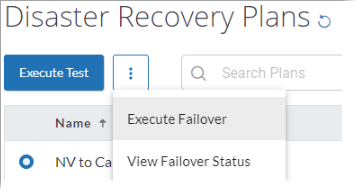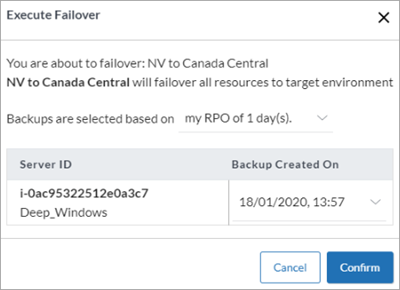Execute Test vs Execute Failure of a DR Plan
This article applies to:
- Product editionCloudRanger
Overview
Once the DR plan is ready, the options to execute it are:
- Execute Test
- Execute Failover
Even though they have the same backend functionality, their purpose is distinct. This article helps you to choose the right plan from the two.
Execute Test
Use Execute test to verify whether the DR plan is working according to the requirement. With the test execution, you can select the backups based on the RPO or select a point-in-time backup. In addition, you need to set the retention period of the test DR instances.
- Select Disaster Recovery Plan and click Execute Test.

- Select the backups and retention of the DR instances.

- Click Confirm. This DR instance spawned will be automatically terminated after the specified time.
You can also configure a smaller instance in the DR policy type to validate whether the DR test is working correctly. This helps to reduce costs while performing the DR tests.

Execute Failover
Use Execute Failover to perform an actual failover of the DR plan during a disaster. With this plan, you can select the backups based on the RPO or select a point-in-time backup. However, you do not have the option to define retention.
- Select Disaster Recovery Plan and click the more options (three dots) menu.

- Select Execute Failover from the menu.
- Select the backups as per the RPO or point-in-time backup.

- Click Confirm.
You can configure to automatically shutdown the source servers after the failover as well, which is not applicable for DR test.


